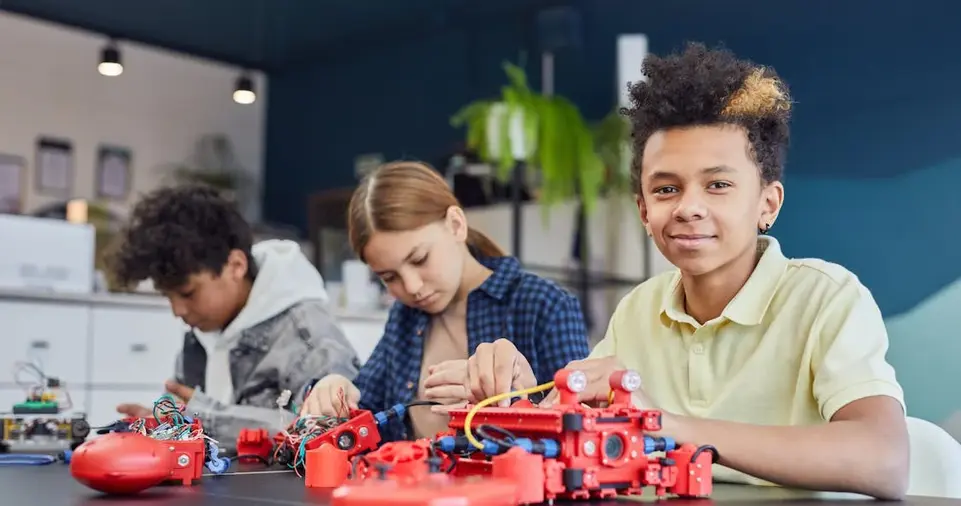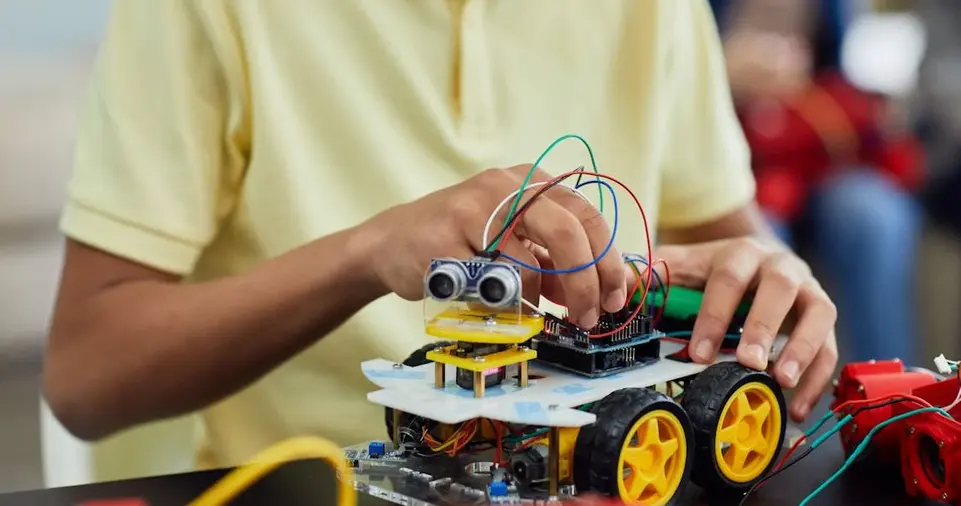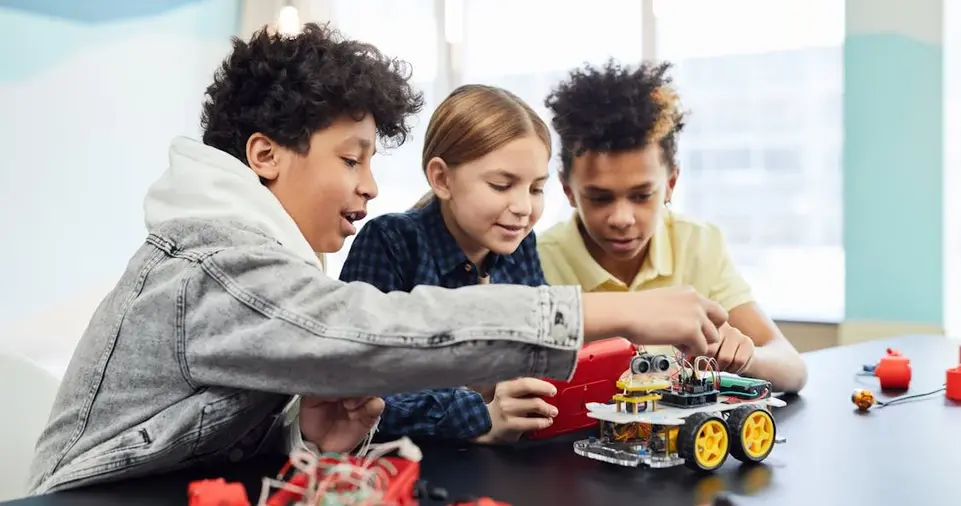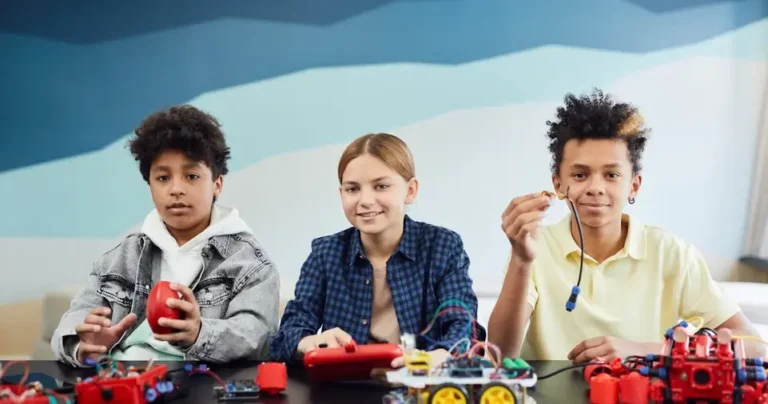STEM Toys (Science, Technology, Engineering, and Mathematics) education has become a hot topic, and for good reason! Giving kids a head start in STEM-related skills not only makes learning fun but also sets them up for success in our increasingly tech-driven world.
One of the easiest and most engaging ways to introduce kids to these concepts is through STEM toys.
But what are STEM toys, and how do they teach engineering skills? Let’s dive into it!
Understanding STEM Toys
What Are STEM Toys Designed For?
STEM toys are tools that combine play with learning. These toys are designed to help kids explore science, technology, engineering, and math concepts in a hands-on and engaging way.
From building blocks to robotic kits, these toys spark curiosity and promote skills like problem-solving and critical thinking, often without kids even realizing they’re learning!
Examples of Popular STEM Toys
Some popular STEM toys include:
- LEGO Technic Sets: For budding engineers who love building intricate models.
- Circuit Kits: Perfect for understanding electrical engineering basics.
- Robotics Kits: Ideal for learning coding and automation.
The Connection Between STEM Toys and Engineering Skills

What Are Basic Engineering Skills?
Basic engineering skills include problem-solving, understanding structural design, creativity, and logical thinking.
These skills lay the foundation for solving real-world challenges, whether it’s building a bridge or coding a robot.
How STEM Toys Incorporate Engineering Principles
STEM toys often mimic real-world engineering problems. For instance:
- Building blocks teach structural integrity.
- Marble runs introduce kids to physics and motion.
- Robotic kits simulate automation and mechanics.
Benefits of STEM Toys in Teaching Engineering
Encouraging Critical Thinking
When kids are faced with a challenge—like balancing a tall structure—they need to think critically about how to solve the problem.
Enhancing Problem-Solving Abilities
STEM toys often involve trial and error. This teaches kids persistence and the value of finding creative solutions.
Hands-On Learning and Creativity
Unlike traditional learning methods, STEM toys allow kids to get their hands dirty (sometimes literally).
This tactile experience boosts creativity and helps them visualize concepts better.
How STEM Toys Foster Learning by Age Group

For Toddlers: Simple STEM Concepts
Toddlers can learn simple cause-and-effect relationships through toys like stacking rings or push-pull toys.
For Preschoolers: Building and Designing
Preschoolers love building! Sets like DUPLO or magnetic tiles encourage early engineering exploration.
For Older Kids: Advanced Engineering Concepts
Older children can tackle more complex challenges, like building robots or coding games. These activities build confidence and advanced skills.
Real-Life Applications of Engineering Skills Gained from STEM Toys
- Building and Construction: Kids can transition from constructing with LEGO to understanding real-world architecture.
- Technology and Coding Foundations: Coding kits lay the groundwork for tech-savvy futures.
- Team Collaboration and Project Management: Group projects using STEM toys teach valuable soft skills, like communication and teamwork.
Choosing the Right STEM Toys

Factors to Consider (Age, Interest, Complexity)
Pick toys suited to your child’s age and interests. A younger child may enjoy simple block sets, while older kids might prefer a coding robot.
Balancing Education and Fun
The best STEM toys are those that make learning feel like playtime.
Tips for Parents to Maximize Learning with STEM Toys
- Encouraging Open-Ended Play: Allow kids to explore freely rather than sticking to instructions.
- Incorporating STEM Toys in Everyday Activities: Use STEM toys to explain real-world problems, like building a bridge for their toy cars.
- Setting Goals and Challenges: Introduce challenges, like building the tallest structure, to motivate learning.
Popular STEM Toys That Teach Engineering Skills
- LEGO Kits: Encourage creativity and structural design.
- Robotic Kits: Teach automation, mechanics, and coding.
- Marble Runs and Construction Sets: Promote an understanding of motion and design.
ALSO READ: How to Build Logical Thinking Skills in Kids Through Educational Toys
Conclusion
STEM toys are more than just playthings—they’re the building blocks of your child’s future.
By incorporating engineering concepts in fun and engaging ways, they prepare kids for the challenges of tomorrow.
So, why not invest in a few STEM toys and let your little engineers get started today?
FAQs
What are STEM toys?
STEM toys are educational tools designed to teach science, technology, engineering, and math concepts through play.
How can STEM toys develop critical thinking in kids?
By presenting challenges that require logical solutions, STEM toys encourage kids to think critically and solve problems.
Are STEM toys suitable for all age groups?
Yes, STEM toys are available for toddlers, preschoolers, and older kids, with complexity levels tailored to each age.
What are some affordable STEM toy options?
Magnetic tiles, basic building blocks, and simple circuit kits are great budget-friendly options.
Can STEM toys prepare kids for future careers in engineering?
Absolutely! By teaching foundational engineering skills early on, STEM toys can inspire future engineers and innovators.











